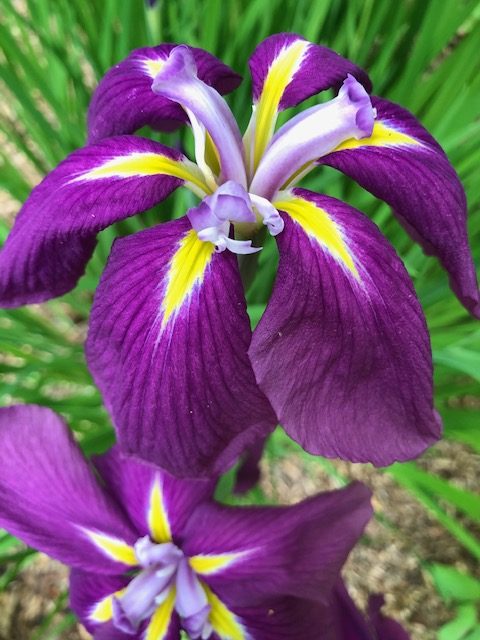“Had I but four feet of ground at my disposal,” said Alice Harding in 1917, “I would plant a peony in the centre and proceed to worship.” And worship she did. Big time. Harding amassed a world-famous collection of peonies and authored two comprehensive references about them.
Things haven’t changed very much. Peonies are still hard to resist. And why would you want to? Consider Peony ‘Coral Charm’ Z 3-8, which has graced my organic garden — and home — for 3 decades and is especially worthy of worship. This dazzler enchants at every stage of its growth. Photos below.
Few flowering plants can match a peony’s easy-care, beauty, disease/pest resistance, and longevity. For abundant late-May/early-June bloom, grow peonies in sun. In my organic garden they do well in shade, but with reduced bloom. (This year Coral Charm produced seven flowering stems. More than usual.)
Fall is the time to plant bare-root plants. Do not cover the fleshy crown’s pink eyes with more than two inches of soil. Deep planting is a major cause of non-bloom. And plant in well-drained sweet soil. If you have acid soil, amend with lime or with wood ash from the fireplace. You can fertilize established plants in the early Spring with compost, wood ash, or rose food. (Yet, be aware that peonies have been known to flourish for years with no attention at all. Less is more.)
Deer, voles, and rabbits are not a problem. Peonies aren’t on the menu. Ants, on the other hand, may be a problem. They are attracted to the sweet nectar exuded by peony buds. Ants don’t harm the plants but they may hitch a ride on the flowers harvested for indoor arrangements. And, no, they are not essential for flowering. (Ants just have a good press agent.) Moreover, you can companion plant with tansy, a fool-proof ant repellent. Colonial settlers grew tansy by the front door to keep ants from invading their homes.
Note: Some claim that P. ‘Coral Charm’ is fragrant. This is misleading. There is a scent but to my nose not a pleasant one. Still, it doesn’t carry on the air so it’s easily avoided.
Another perennial worthy of “worship” is the rhizomatous Japanese iris, Iris ensata Z 4-9. These deliciously opulent plants — sometimes called “Botanical Butterflies” — bloom in late June into July. Photo below of my gorgeous no-name-cultivar.
(November Update: I think the cultivar name is ‘Lion King’. They sure look alike.)
For best growth, provide a sunny planting site and acidic, moist, organic-rich, well-drained soil. Soak the bare-root rhizomes in water before planting, and plant 2-3 inches deep. Fertilize established plants in Spring with an acidic fertilizer. They don’t like dry soil, nor do they like sitting in pools of freezing water in winter. In other words, keep them well-watered in well-draining soil. It is recommended that the plants be divided every 2 or 3 years in order to maintain vigor.
My plants grow in acidic, moist, rich soil, but in filtered sun / half-day shade and are long overdue for division. Bloom has been reduced and, unfortunately, Japanese iris is on the voles’ menu. Yet, for over 25 years my plants have soldiered on; they are healthy and produce sumptuous flowers every year.



